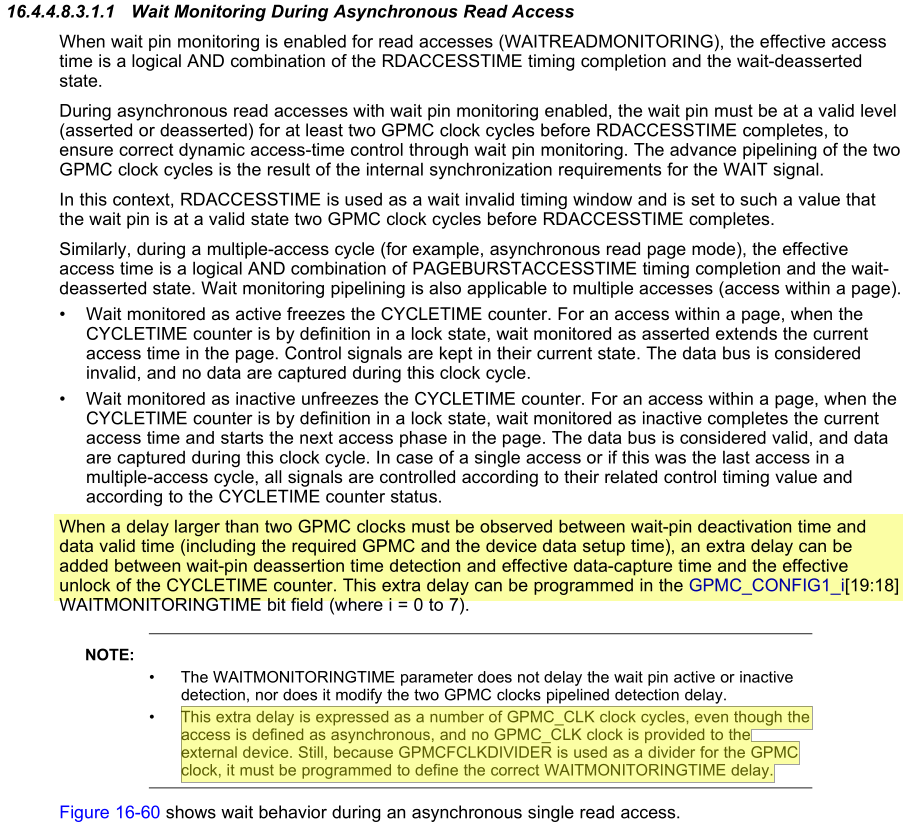Hello,
I'm planning to interface a custom board with an AM5749 GPMC peripheral to an FPGA with the FPGA interface emulating an asynchronous non-multiplexed NOR flash-like interface.
I'm looking at the timing diagrams in the datasheet (sprs982h) and I'm a little confused about the formulas.
For example, from Table 5-61, for FA9, the footnote (5) for value J shows the formula:
(5) J = (CSOnTime × (TimeParaGranularity + 1) + 0.5 × CSExtraDelay) × GPMC_FCLK
This doesn't seem to make sense, since the timings are shown in units of ns.
The CSOnTime register is in units of GPMC_FCLK cycles, the TimeParaGranularity register is a scalar multiplier that can be set to 1 or 2 and the CSExtraDelay register can be set to 0 or 1 to enable the extra 0.5 clock cycle delay.
In the formula, should GPMC_FCLK be the period of GPMC_FCLK or am I not understanding how it works correctly?
Thanks,
USO



